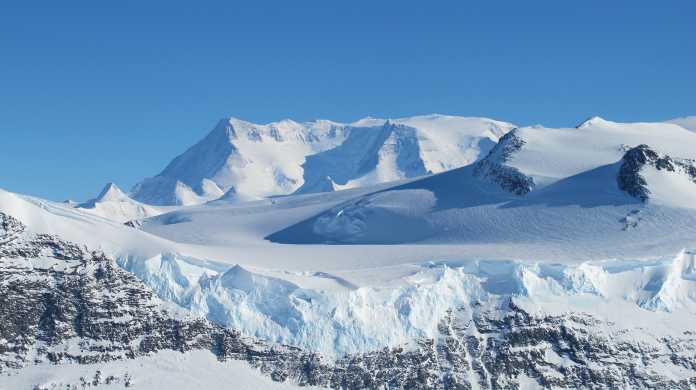At the top of Google News results this week for “climate change,” an article in Treehugger is titled, “The South Pole is Warming 3 Times Faster Than the Global Average.” The New York Times, Yahoo News, and many other prominent media outlets published similar articles. However, the claim is based on computer model estimates that have been contradicted by actual temperature measurements. In short, the South Pole warming claim is another alarmist fraud promoting the nefarious Climate Delusion.
The media articles this week are citing a study in Nature Climate Change, whose authors claim Antarctica has warmed three times faster than the global average over the past three decades. The authors claim the asserted warming is likely partly due to human caused global warming.
The article in Treehugger is a perfect example of the media’s fawning, fraudulent coverage of the report.
Using weather data run through computer model simulations, the researchers claim Antartica warmed by 1.8 degrees Celsius between 1989 and 2018, with large variations across the continent.
“In the early decades after 1957, when measurements were first recorded at the South Pole, average temperatures remained steady or declined. Near the end of the 20th century, temperatures began to rise,” writes the author of the Treehugger piece. This is a lie. The actual data show just the opposite temperature trends occurred. In Antarctica, average temperatures as recorded at the weather locations across the continent rose fairly steadily from the 1950s through the late 1990s and then began to fall off. Indeed, recorded temperatures have significantly cooled since 1998. So, what the data show is for 20 of the 30 years the Nature study computer simulations show warming, actual temperature readings show either declining or steady temperatures across Antarctica.
Beyond the ground-based measurements, global satellite data recorded from 1979 to 2019 show no warming or cooling trend at all for the South Pole.
Interestingly, the explosive growth of permanent research stations on Antarctica may be a warming influence on the continent. Of the more than 70 permanent research stations on Antarctica and 8 stations on the surrounding islands, where most weather and temperature data for the continent are recorded, only two were established before the 1940s. This means the vast majority of permanent Antarctic stations were established from the 1940’s through the 1980s, as recorded temperatures were rising. During the same time period, outside of Antarctica, the rest of the globe experienced a modest cooling from the 1950s through the early 1980s, sparking speculation by some scientists, and warnings in front page stories in the mainstream media, the earth could be entering an overdue ice age.
One might wonder if Antarctica’s anomalous recorded surface temperature rise during this period could, at least in part, be a result of the heat island effect of the permanent human habitations being established where none previously existed.
In a Climate Realism post from April, James Taylor goes into some detail describing the cooling temperatures and ongoing ice and snow accumulation measured on Antarctica, even as the Nature Climate Change study claims, based on model simulations, Antarctica was warming three times faster than the globe. Quite simply, the Nature study’s findings are undermined by the actual data, and thus the study’s claims are provably wrong.
The authors of the Nature Climate Change piece don’t stop there, however. They go well beyond computer model temperature projections to pure speculation. Although acknowledging in their report that natural factors including large-scale, multi-year and multi-decadal shifts in wind and ocean currents on and around Antarctica are the dominant factors driving climate there, they then go on to assert, without presenting any evidence, “atmospheric internal variability can induce extreme regional climate change over the Antarctic interior, which has masked any anthropogenic warming signal there during the twenty-first century.” (emphasis mine)
As reported by Treehugger, Kyle Clem, postdoctoral research fellow in Climate Science at the University of Wellington and lead author of the study, repeated this conjecture in an interview with the Guardian, saying, “The temperature variability at the South Pole is so extreme it currently masks human-caused effects.” For Clem, et al, evidently, when you can’t find the anthropogenic climate change disaster signal you believe should be evident, it is sound scientific practice to simply assert nature is temporarily hiding it!
The take away is, neither the ground-based nor satellite measurements of temperatures in Antarctica show it has warmed, much less warmed three times faster than the planet as a whole. Even if Antarctica was warming, however, with the average temperatures ranging from -60 degrees C (-76 F) during winter to -20 C (-4 F) in summer, no meltdown would in the offing.

















[…] melting and instability, ignoring evidence to the contrary. I debunked that claim in a July 3 Climate Realism post in which I pointed out global satellite data showed no warming or cooling trend at the […]
[…] debunked that claim in a July 3 Climate Realism post in which I pointed out global satellite data showed no warming or cooling trend at the South Pole […]
THANX GOOD ARTICLE. we only get one side up here as the democrats control ABC, NBC, CBS. FOX SOMETIMES GIVES IT BOTH WAYS. DON’T HAVE WEBSITE.